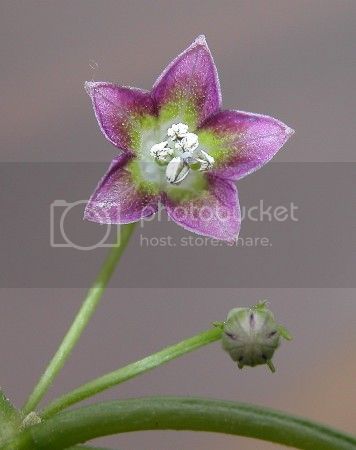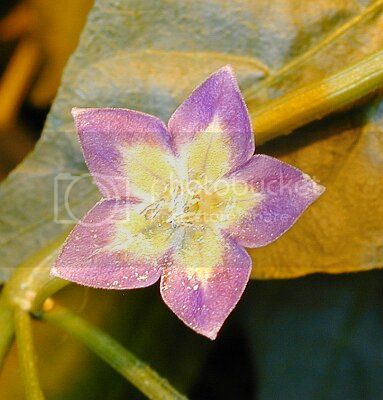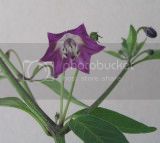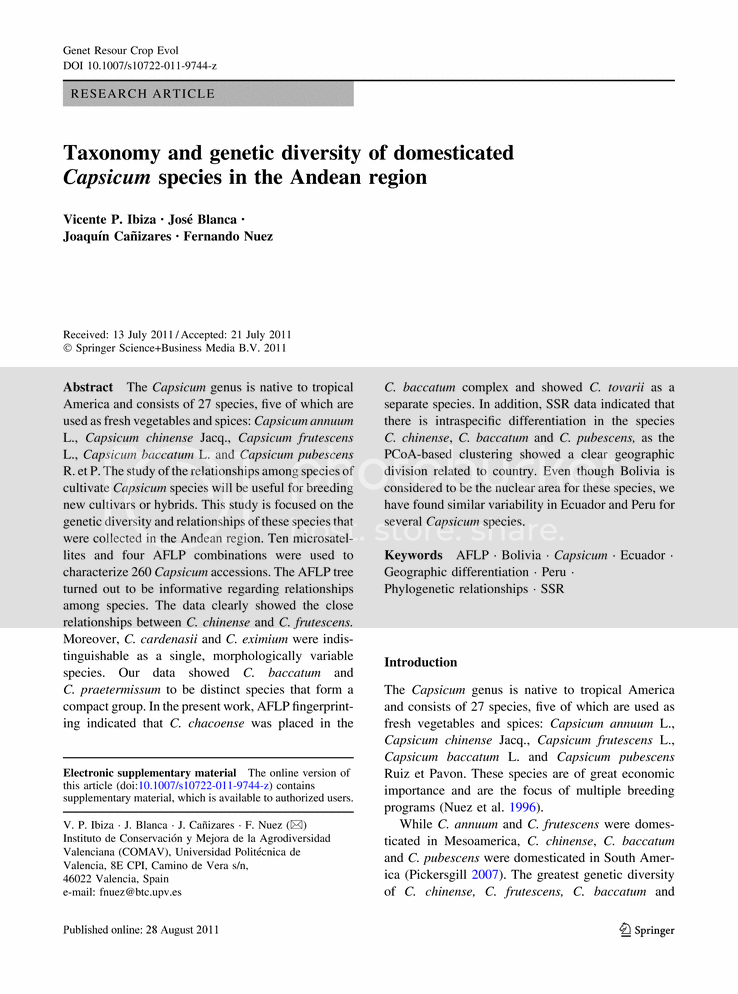Having recently been lucky enough to try a Rocopica, I wanted to start a discussion about this kind of inter-species hybrid in general, but using the Rocopica as a model.
For all you growers of wilds, please chip in with your experience and knowledge.
I guess to do that we have to look at the Rocopica specifically, first. The Rocopica is a cross between a Rocoto, C.pubescens, and an Ulupica. The pepper known as Ulupica in Bolivia is generally regarded as the species Capsicum cardenasii. However, Ulupica seem to be also used for Capsicum eximium in some instances. From what little is known, cardenesii seems to be more limited in it`s distribution to an area around La Paz in Bolivia, whereas eximium is distributed from southeastern Peru all the way to northern Argentina.
To make things even more confusing, the cross between C.pubescens and Ulupica is also found in the wild, i.e. the Rocopica.
Finally, some taxonomists have written that the species C.cardenesii isn`t really a species, but a slightly different form of C.eximium.
Yikes!
Here are a few photos of the various flowers of these 2 species and one inter-species cross.
C.cardenesii, bell-like flowers


C.eximium, flat, not-bell like flowers

Rocopica, can be a mixture, depending on the cross


First things first.
The most recent publications on Capsicum species say that C.eximium and C.cardenasii are separate species. This does not rely on the old ways of collecting samples, examining them with microscope and determining if they look different. The new work relies on a number of DNA sequences from each species. Like this one from 2011,

For all you growers of wilds, please chip in with your experience and knowledge.
I guess to do that we have to look at the Rocopica specifically, first. The Rocopica is a cross between a Rocoto, C.pubescens, and an Ulupica. The pepper known as Ulupica in Bolivia is generally regarded as the species Capsicum cardenasii. However, Ulupica seem to be also used for Capsicum eximium in some instances. From what little is known, cardenesii seems to be more limited in it`s distribution to an area around La Paz in Bolivia, whereas eximium is distributed from southeastern Peru all the way to northern Argentina.
To make things even more confusing, the cross between C.pubescens and Ulupica is also found in the wild, i.e. the Rocopica.
Finally, some taxonomists have written that the species C.cardenesii isn`t really a species, but a slightly different form of C.eximium.
Yikes!
Here are a few photos of the various flowers of these 2 species and one inter-species cross.
C.cardenesii, bell-like flowers


C.eximium, flat, not-bell like flowers

Rocopica, can be a mixture, depending on the cross


First things first.
The most recent publications on Capsicum species say that C.eximium and C.cardenasii are separate species. This does not rely on the old ways of collecting samples, examining them with microscope and determining if they look different. The new work relies on a number of DNA sequences from each species. Like this one from 2011,














